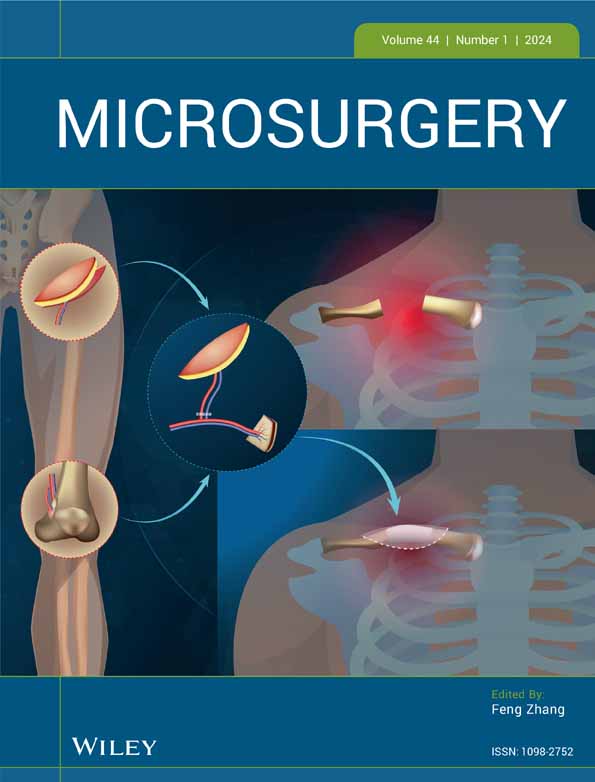Inverted gracilis muscle free flap with intraoral vascular anastomoses for facial reanimation in vessel depleted neck: A case report
Abstract
The reinnervated gracilis muscle free flap represents a workhorse of facial reanimation. This procedure is carried out secondarily to parotid resections, due to advanced tumors that spread to the surrounding structures. Finding recipient vessels might be problematic if other reconstructive procedures are needed to address the defects. This paper describes a procedure to inset a reinnervated gracilis muscle free flap in a vessel depleted patient, through intraoral anastomoses to avoid venous interposition grafts. A 52-year-old man developed an advanced adenocarcinoma of the deep parotid lobe and underwent radical surgical excision including the mandibular ramus, condyle, and facial soft tissues (defect size: 8 cm × 4 cm). A secondary double-flap reconstruction restored the mandibular defect and inset a cross-face nerve graft. A third intervention finalized the facial reanimation with a 10 cm reinnervated gracilis muscle free flap. The gracilis flap inset was inverted resulting in the proximal flap (pedicle side) lying on the buccal aspect. This allowed vessel joining from the contralateral side via intraoral anastomoses. No complications occurred within and after the intervention. However, the adenocarcinoma relapsed before reinnervation of the gracilis. The patient also had distant brain and lung metastases and received best supportive care. The inverted gracilis muscle free flap may represent an option for attaining facial reanimation in vessel-depleted patients avoiding long interposition venous grafts.
CONFLICT OF INTEREST STATEMENT
The authors declare no conflict of interest.
Open Research
DATA AVAILABILITY STATEMENT
Data sharing is not applicable to this article as no new data were created or analyzed in this study.




